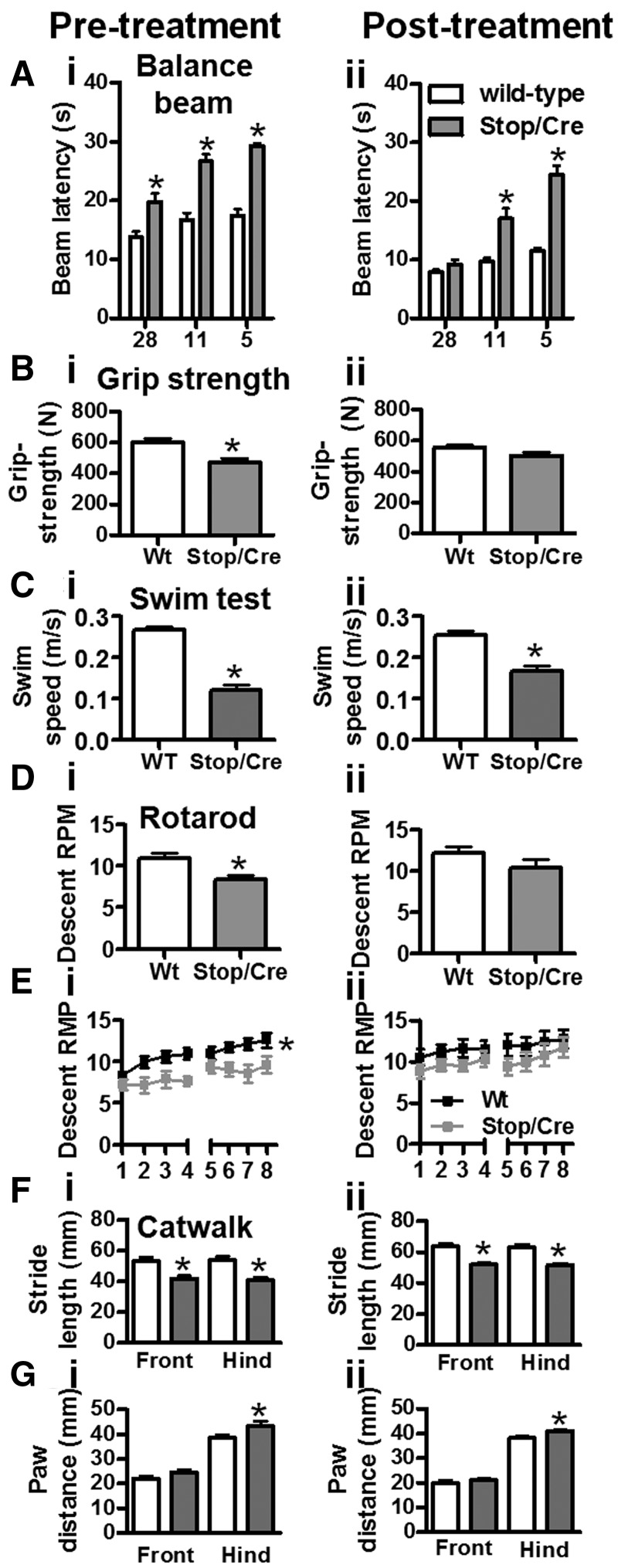Figure 4.
Improvement in balance and motor function following activation of Mecp2. [A(i)] Both Stop (n = 24) and Stop/y,Cre (n = 17) mice displayed similar impairment in balance beam performance compared with wild-type pretreatment at all beam widths tested (5–28 mm round and rectangular beams combined). [A(ii)] Following tamoxifen treatment, Stop/y,Cre (n = 17) mice improved performance when tested on the large (28 mm) beams, but remained significantly impaired relative to wild-type in the narrower beams. Note that impairment became more pronounced as the task was made more challenging with narrower beams. [B(i)] Grip strength at pretreatment showed significant impairment in Stop/y,Cre cohort; [B(ii)] there was no difference between genotypes 6 weeks after tamoxifen treatment. In contrast, swim speed recorded in a continuous swim task was lower in Stop/y,Cre mice pre- and post-tamoxifen treatment [C(i) and (ii)]. Performance on the rotarod was significantly reduced for maximum attained rotation speed [D(i)] and for motor learning [E(i)] in Stop/y,Cre mice pretreatment. This phenotype fully recovered following tamoxifen administration [D(ii) and E(ii)]. Not affected by treatment were parameters of gait as determined by CatWalk. There was a shorter stride length for all paws [F(i) and (ii)] and greater paw distance between the hind, but not front legs [G(i) and (ii)], both pre- and post-treatment, respectively. Means ± SEM. Asterisks indicate P < 0.05 relative to wild-type.

